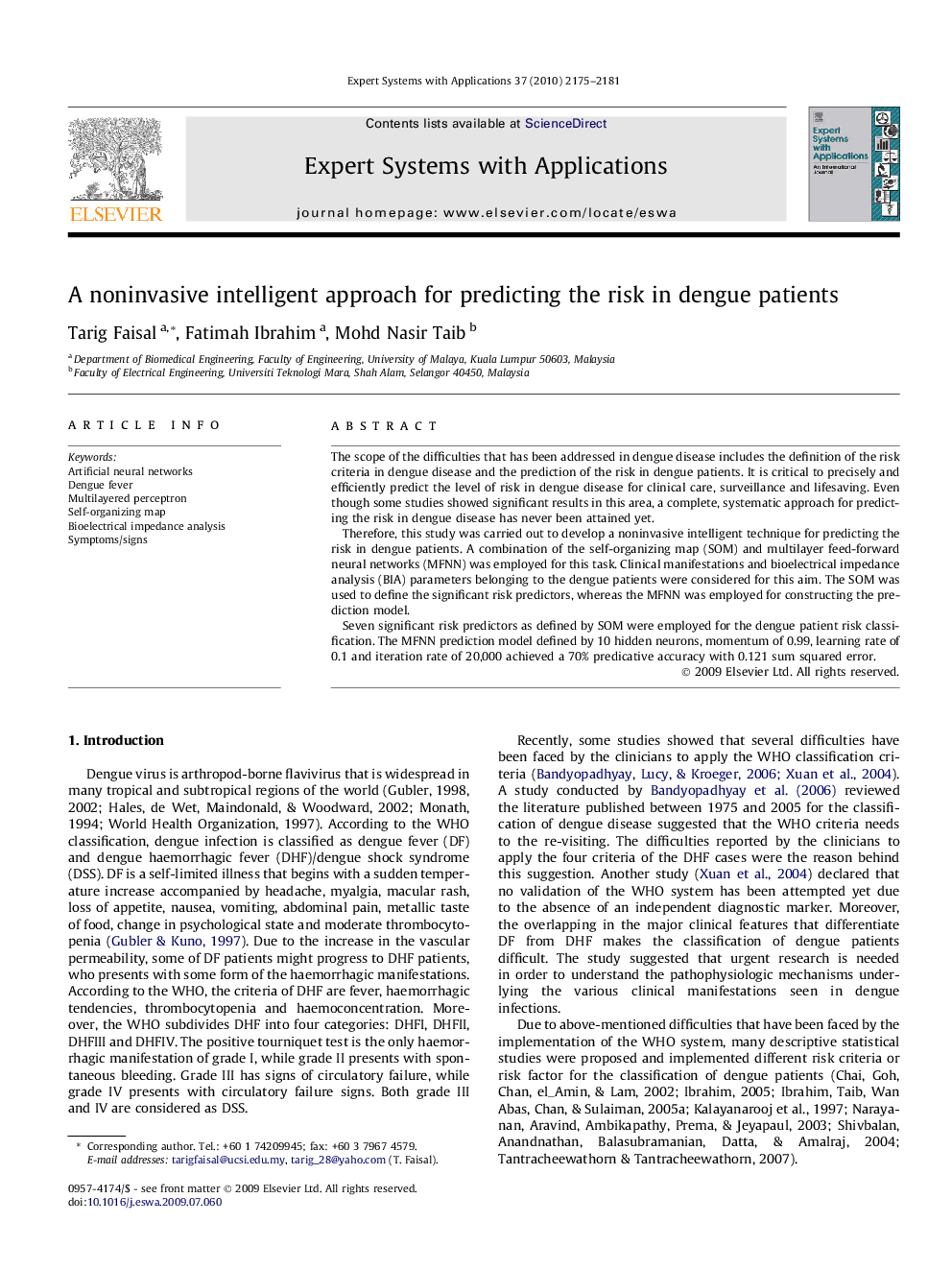| Article ID | Journal | Published Year | Pages | File Type |
|---|---|---|---|---|
| 384270 | Expert Systems with Applications | 2010 | 7 Pages |
The scope of the difficulties that has been addressed in dengue disease includes the definition of the risk criteria in dengue disease and the prediction of the risk in dengue patients. It is critical to precisely and efficiently predict the level of risk in dengue disease for clinical care, surveillance and lifesaving. Even though some studies showed significant results in this area, a complete, systematic approach for predicting the risk in dengue disease has never been attained yet.Therefore, this study was carried out to develop a noninvasive intelligent technique for predicting the risk in dengue patients. A combination of the self-organizing map (SOM) and multilayer feed-forward neural networks (MFNN) was employed for this task. Clinical manifestations and bioelectrical impedance analysis (BIA) parameters belonging to the dengue patients were considered for this aim. The SOM was used to define the significant risk predictors, whereas the MFNN was employed for constructing the prediction model.Seven significant risk predictors as defined by SOM were employed for the dengue patient risk classification. The MFNN prediction model defined by 10 hidden neurons, momentum of 0.99, learning rate of 0.1 and iteration rate of 20,000 achieved a 70% predicative accuracy with 0.121 sum squared error.
